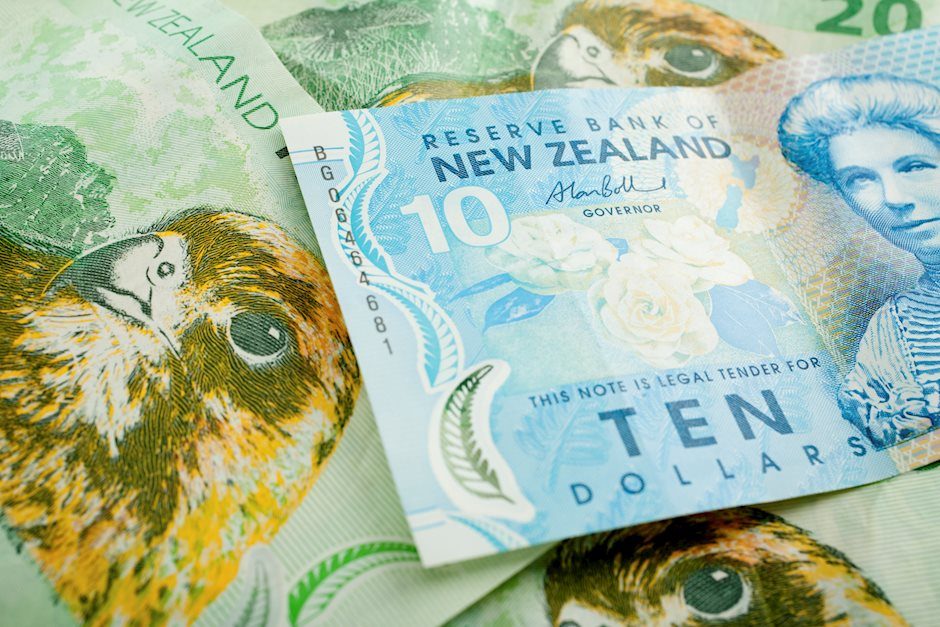NZD/USD consolidates around 0.6100 as traders await US data
- NZD/USD remains stable as traders await key economic data from the United States (US).
- The Business NZ Manufacturing PMI fell to 41.1 in June, marking the 15th consecutive month of contraction.
- The US Consumer Price Index declined by 0.1% MoM in June, marking its lowest level in over three years.

NZD/USD hovers around 0.6100 in early European trading hours on Friday as investors react to New Zealand’s weak PMI data. The Business NZ Manufacturing PMI dropped to 41.1 in June from 47.2 in May. This has marked the 15th consecutive month of contraction and the third lowest value for a non-COVID lockdown month. Additionally, traders are awaiting the Michigan Consumer Sentiment Index and the US Producer Price Index (PPI), both due on Friday, for further insights into the US economy.
The NZD/USD pair received support from softer-than-expected US Consumer Price Index (CPI) data for June has heightened expectations of a potential Federal Reserve (Fed) rate cut in September. The core CPI, which excludes volatile food and energy prices, rose by 3.3% year-over-year in June, compared to May's increase of 3.4% and the same expectation. Meanwhile, the core CPI increased by 0.1% month-over-month, against the expected and prior rise of 0.2%.
Additionally, Federal Reserve Bank of Chicago President Austan Goolsbee said on Thursday that the US economy appears to be on track to achieve 2% inflation. This suggests Goolsbee is gaining confidence that the time for cutting interest rates may soon be approaching. He also stated "My view is, this is what the path to 2% looks like," according to Reuters.
Earlier this week, the Reserve Bank of New Zealand (RBNZ) maintained its cash rate at 5.5% on Wednesday, as expected. However, it suggested potential rate cuts in August if inflation declines as anticipated. The New Zealand Dollar (NZD) might come under pressure due to the RBNZ's dovish monetary policy statement.
New Zealand Dollar FAQs
The New Zealand Dollar (NZD), also known as the Kiwi, is a well-known traded currency among investors. Its value is broadly determined by the health of the New Zealand economy and the country’s central bank policy. Still, there are some unique particularities that also can make NZD move. The performance of the Chinese economy tends to move the Kiwi because China is New Zealand’s biggest trading partner. Bad news for the Chinese economy likely means less New Zealand exports to the country, hitting the economy and thus its currency. Another factor moving NZD is dairy prices as the dairy industry is New Zealand’s main export. High dairy prices boost export income, contributing positively to the economy and thus to the NZD.
The Reserve Bank of New Zealand (RBNZ) aims to achieve and maintain an inflation rate between 1% and 3% over the medium term, with a focus to keep it near the 2% mid-point. To this end, the bank sets an appropriate level of interest rates. When inflation is too high, the RBNZ will increase interest rates to cool the economy, but the move will also make bond yields higher, increasing investors’ appeal to invest in the country and thus boosting NZD. On the contrary, lower interest rates tend to weaken NZD. The so-called rate differential, or how rates in New Zealand are or are expected to be compared to the ones set by the US Federal Reserve, can also play a key role in moving the NZD/USD pair.
Macroeconomic data releases in New Zealand are key to assess the state of the economy and can impact the New Zealand Dollar’s (NZD) valuation. A strong economy, based on high economic growth, low unemployment and high confidence is good for NZD. High economic growth attracts foreign investment and may encourage the Reserve Bank of New Zealand to increase interest rates, if this economic strength comes together with elevated inflation. Conversely, if economic data is weak, NZD is likely to depreciate.
The New Zealand Dollar (NZD) tends to strengthen during risk-on periods, or when investors perceive that broader market risks are low and are optimistic about growth. This tends to lead to a more favorable outlook for commodities and so-called ‘commodity currencies’ such as the Kiwi. Conversely, NZD tends to weaken at times of market turbulence or economic uncertainty as investors tend to sell higher-risk assets and flee to the more-stable safe havens.
Author

Akhtar Faruqui
FXStreet
Akhtar Faruqui is a Forex Analyst based in New Delhi, India. With a keen eye for market trends and a passion for dissecting complex financial dynamics, he is dedicated to delivering accurate and insightful Forex news and analysis.

















